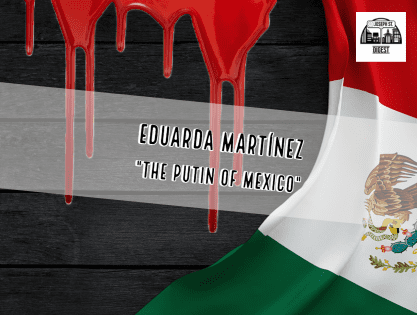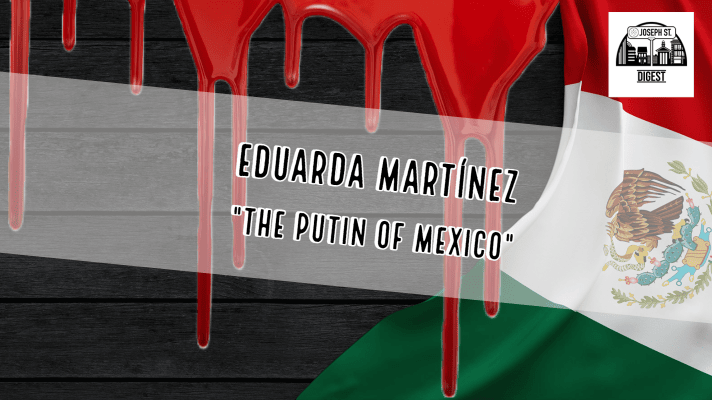At eleven, her family purchased their way across “la pared” or the wall, as it was known. Both major US political parties had become entrenched in supporting anti-southern immigration politics and big supporters of the security of the American-Mexican border. By this point in time, big security construction contractors were involved in annual Congressional lobbying efforts for ongoing upgrades and repairs of the southern border. These same contractors would fuel national fears of waves of immigrants coming for the hard-earned American jobs, which were increasing in hourly pay rates. The contractors created deepfakes showing immigrants coming for the border. Pundits and politicians parroted these same deepfakes as talking points, reinforcing the messages to the American populace. As a result, there was a decline in using Spanish as a language in the U.S. There was also an uptick in violence against those of Hispanic origins, but there was also a lacking coverage of this violence by mainstream sources, so most people thought this was fake news.
The journey for Eduarda would end up in a tragedy she would never forget. Her parents and older brother were shot dead by the U.S. Border Patrol, and she was taken into custody, processed as an illegal minor, held in a detention camp for nearly a month where she was sexually terrorized by older boys there, and eventually deported back to Mexico to the custody of an uncle.
She would eventually earn a degree in law and become involved in a small party called El Partido Nacionalista Mexicano (PNM) or the Mexican Nationalist Party. At a young age, she quickly rose in the ranks of the party because of her popularity with the people. She got elected to Chamber of Deputies in the Congress of the Union. Eventually, she was elected to the Senate. She was a fiery Anti-Americano politician and pushed her party’s agenda of putting Mexico’s interests ahead of the U.S.’s anti-immigration stance. Her opponents called her La Putin de Mexico (the Putin of Mexico) for her popularity with the people after the historical figure, Vladimir Putin of Russia, and his popularity with the Russian people. In response, she said, “I welcome this name. What politician doesn’t want to follow in the footsteps of such a grand master?”
Her party’s agenda was very popular with Mexico’s electorate during a time when the Mexican people saw America as hostile to them. A theme reinforced by popular news on local social media in Mexico.
In the Senate, she helped to form an alliance with China by being the chair of the President’s delegation to China. She negotiated with the Chinese high-tech manufacturing investments in Mexico, the securement of short-range tactical nuclear weapons, help for Mexico to continue to develop nuclear weapons and the building up Mexico’s military arms complex. This was in exchange for increased border access to the region by Chinese authorities. A move which politically shocked the U.S. and motivated some U.S. politicians to attempt peaceful negotiations with Mexico. All attempts failed, as neither side would compromise.
It would be after these events that Eduarda would be elected as President, and this is when she showed her true agenda. The PNM by this point was in control of both the Senate and Chamber of Deputies that allowed Eduarda to reorganize the constitution making certain oppositional political parties illegal, allowing government censoring of the broadcast of media in Mexico on the internet or through other sources, the illegalization of specific sexual practices such as homosexuality, the political restoration of marriage to only between a man and woman, the elimination of religious freedom by banning all organized religions operating in Mexico (a broader restoration of the old 1940s laws), broadening the powers of the President to be more authoritarian, and extending the term of the President from its six years non-renewable term to a twenty-year non-renewable term. She did all this in the name of protecting Mexico from the American aggressor and restoring Mexico to its rightful place in the world.
Her first act as president included the appointment of 5,000 People Judges who went about the states of Mexico cleaning up the long history of organized crime. They did so by brutally acting as judge, jury, and executioner for anyone associated with organized crime. Eduarda saw this as righting years of a wrong inflicted upon the Mexican people by the Americano government for its war on drugs.
Through public speeches, she would remind her people of the brutal occupation of Mexico City by Americans in 1847 and the illegal taking of northern territories by a forced agreement with the Americans. She spoke of the years of how their brothers and sisters to the north had been used as slaves for the Americano capitalists, and how the Americano government purposely kept Central America in the economic dark ages. She supported selective alternative histories. For example, the idea that Central America would have been better off if the Americano South had won the Civil War and expanded control into the region. Eduarda showed this alternative history through the citation of the works by Silina Nessia Artemievna, a contemporary Russian historian whose writing speculated on alternative outcomes of major events. Eduarda would also use any major holiday, from Cinco de Mayo in the state of Puebla, to Mexican Independence Day on September 16th for large scale military parades.
During the early days of her administration, she was under attack by rebel media for scandalous stories of sexual excess involving two to three men at a time. Eduarda never married, and it was common knowledge she was an alcoholic and sex addict. Through her control of other media, she discredited the rebels and had them publicly arrested and incarcerated for life.
It would be her administration that established the Return to Mexico Movement in the U.S. The movement became popular with Hispanics and Native peoples who felt slighted by the current U.S. politics. The POTUS at the time saw this movement as a foreign sponsored terrorist organization and tried to remove it from American soil. This only strengthened the movement’s resolve to where, in California, a ballot referendum was to be held on leaving the union for Mexico. The referendum would fail by a mere 2,447 votes.
This gave Eduarda the impetus to move against America to help free California from the Intolerantes Americanos (American Bigots). According to her administration, the voting was rife with improprieties. She would mobilize the Mexican army to the 1,954 miles of the border as a show of force. The POTUS would counter with a similar show of force. This became a bitter standoff since neither side wished to use their nuclear weapons.
With the fear of nuclear war with Mexico, and increased protesting by the Return to Mexico Movement, riots broke out in cities such as Los Angeles, San Francisco, Chicago, Atlanta, New York, and Washington, DC. It was commonplace to see people in Texas openly carrying heavy machine guns and other arms, as they organized into citizen militias. The U.S. armed forces saw an increase in those willing to volunteer to fight against Mexico.
Five years prior, the CIA embroiled Eduarda’s administration in a guerrilla warfare along the border of Guatemala. A group of CIA backed rebels, known as Amanecer Azul or Blue Dawn (the name is reputed to come from the CIA’s operation name) would do violent incursions into Mexican border territories. They would go across the border and terrorize the locals and burn down villages. Despite her relationship with Ricardo Alcocer, the strongman of Guatemala, his government could not root out the Blue Dawn rebels or stop the CIA. She suspected he was on the payroll of the CIA and plotted to have him overthrown and replaced. She would be successful at the same time as another major event occurred, the Tijuana Incident.
The Tijuana Incident started with a failed coup attempt against Eduarda’s presidency, which she blamed against the CIA and prompted her in retaliation to launch an offensive along the Tijuana border. The Mexican forces rolled across the border into Imperial Beach, successfully taking the area. This triggered skirmish fighting along the entire length of the Mexican-American border, with artillery being lobbed across the line. The border city of El Paso was devastated by the shelling. Eduarda made threats of using her Chinese tactical nukes against cities in Texas unless the Americans capitulated to her demands. The POTUS refused and put the American nuclear arsenal on high alert. The event would end with a thermite bomb explosion occurring in San Diego, California. Eduarda’s administration said this was a false flag event done by the Americans, whereas the Americans blamed the Return to Mexico Movement operating behind the lines. This bomb leveled a major section of the southern part of the city and could have triggered a nuclear response by the U.S. if it wasn’t for the quick thinking of the President of France, Marie-Pierre Pretre, in talking with the POTUS. It is uncertain what she said to the POTUS, but it’s clear that her call changed the outcome.
It would be Marie-Pierre Pretre, who would diffuse the situation between the two nations. She had made it her mission to see that peace would be restored between Mexico and America. It was an unconfirmed rumor that this only happened because the POTUS at the time was having an affair with the French President. This was information that Eduarda’s administration was privy to and was used as political leverage in the negotiations.
The brokered cease fire and treaty resulted in the U.S. giving up parts of California, Arizona, and New Mexico in compensation for the invasion of Mexico City back in 1847. Lands along the 109th meridian, including the city of San Diego, were now part of Mexico and formed a new Mexican state called Tucson, with the capital being the former Tucson, Arizona. In exchange for the territory, Mexico agreed to abandon its nuclear weapons program and remove its Chinese nuclear weapons in five years.
It would be shortly after the ratification of this treaty by the Congress of the Union that someone would violently assassinate Eduarda in the President’s mansion. A vocal but minority faction in the PNM saw the loss of Mexico’s nuclear capabilities as a shameful weakness in the Eduarda’s administration and were blamed for her assassination. Members of the minority faction were rounded up, put on trial, and found guilty of her murder. The government sentenced them to public execution.
After this, the PNM lost its grips on the Mexican political machine. The people elected a new coalition government which undid much of what Eduarda’s rule and PNM party had created.
The conflict between Mexico and the U.S. changed American politics concerning immigration into the U.S. as the Return to Mexico Movement morphed into the Immigrant Workers Party. While the party could not secure any offices, it would become part of the U.S. political landscape that helped to change American views on immigration and citizenship. Which would eventually help in the creation of the Naturalization Amendment, codifying the process of American citizenship at the constitutional level.
Click here to go to the Rosella Tolfree Website and read more posts.




Leave a Reply